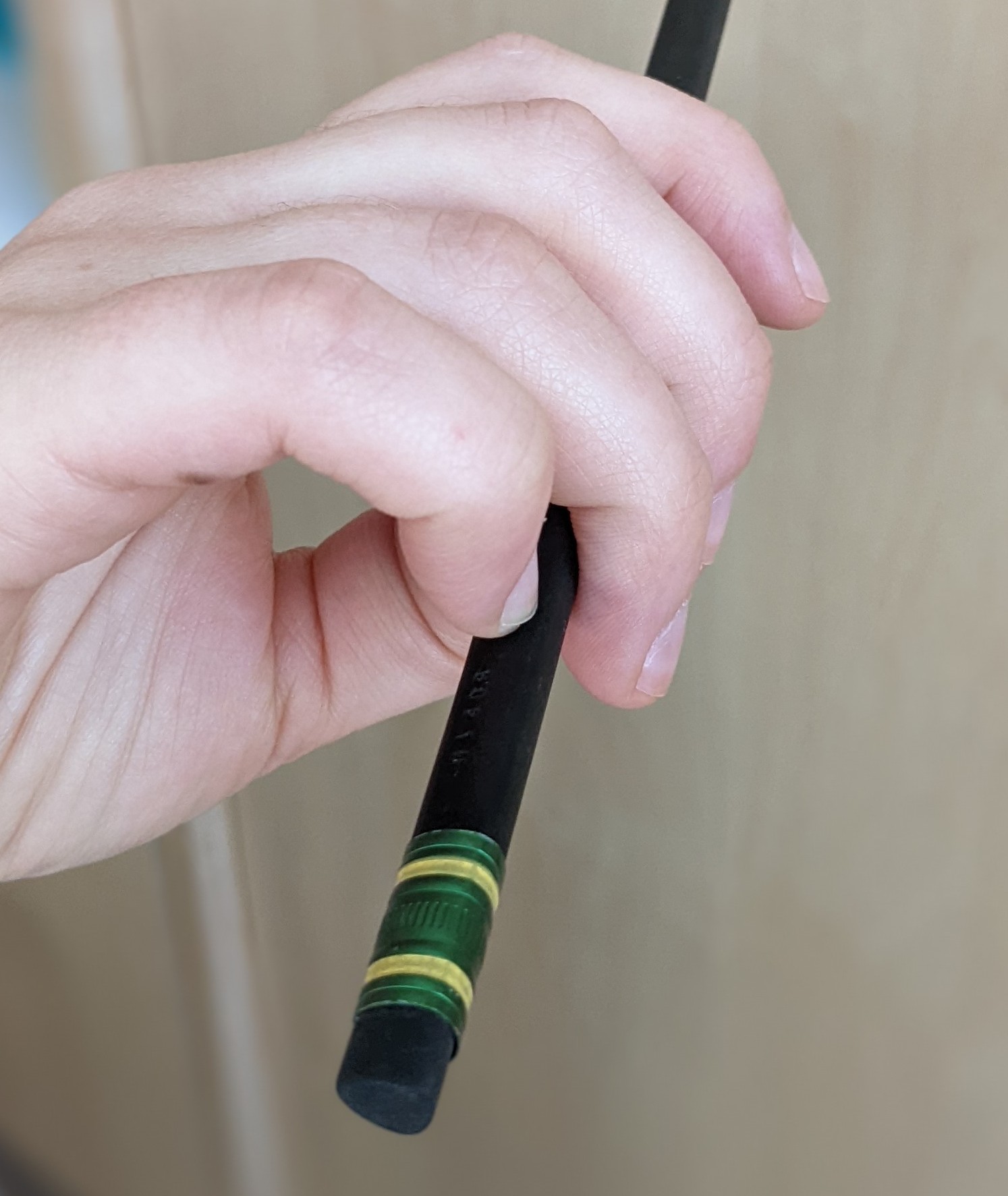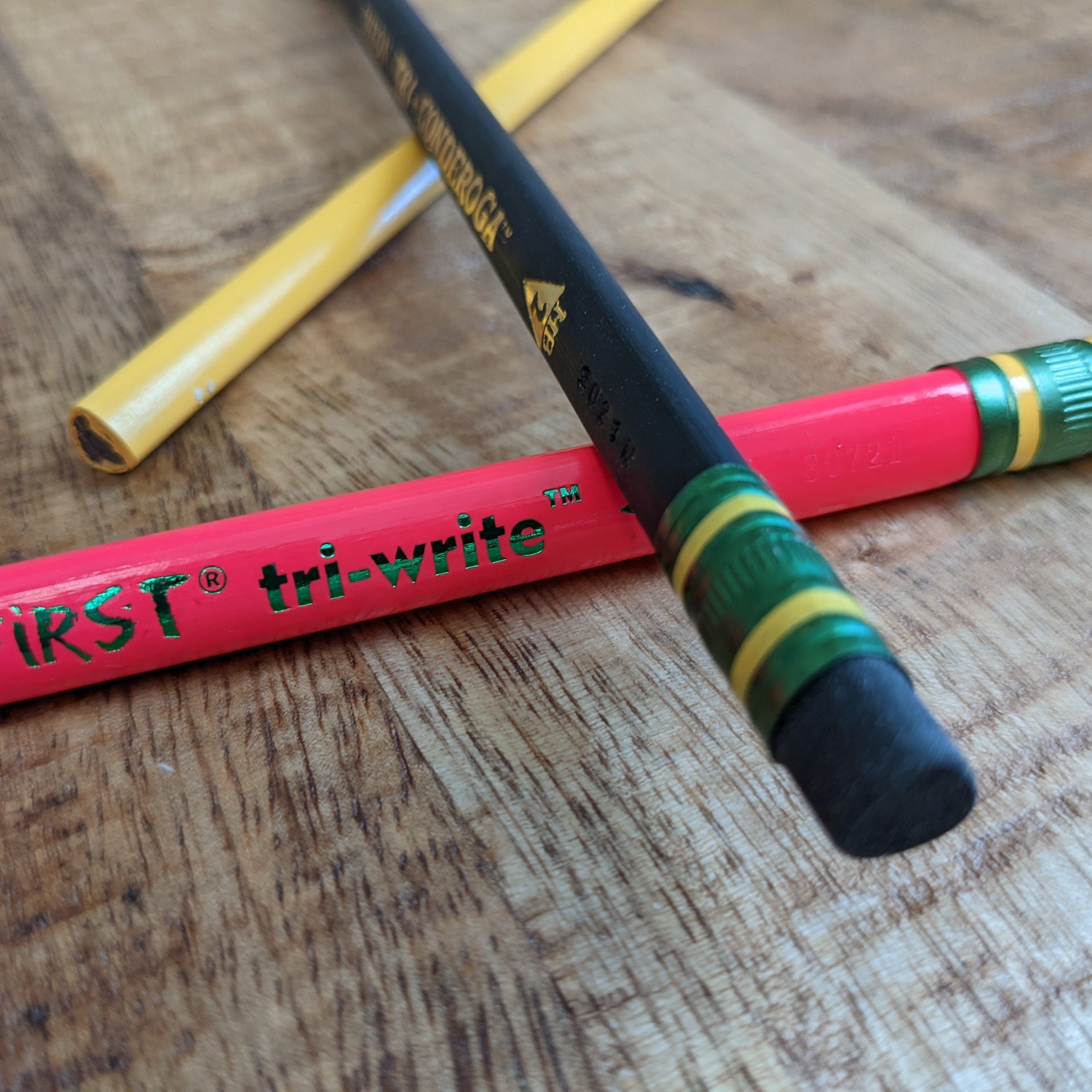Earlier this winter I was scrounging around my good friend’s kitchen to write a quick memo. Doesn’t everyone have a junk drawer in their kitchen? An exhaustive search finally uncovered a pencil stub.
It fit in my hand in an unexpected way.
My friend came downstairs. I asked, “Did you know that you have a triangular pencil?”
He was as surprised as I was. It looked like a perfectly ordinary pencil and he had to lean in closer to confirm that I was not hallucinating.
As a violinist, needless to say the first thing I did with the pencil was make a bowhold on it. And then try some pinky extensions (which is the exercise I emphasize most with beginners). The extensions felt notably more comfortable even on the unfamiliar shape.
The pencil stub went home with me. My friend was amused. Apparently non-violinists have a different relationship with pencils.
Students’ bowholds tend to slip around on hexagonal pencils, especially during dynamic flexibility and manipulation exercises that are at the heart of bow hand development.
Hexagon or Triangle? A Winner Emerges
My beginning students have been unanimous in their support of this triangular innovation.
Students’ bowholds tend to slip around on hexagonal pencils, especially during dynamic flexibility and manipulation exercises that are at the heart of bow hand development. The triangular pencils offer the thumb its own dedicated large, flat surface on bottom. The pinky sits nicely behind the back, and pointer folds around the top edge. Voila! — the usual rolling and slipping have all but disappeared.


When the Hexagon Might Be Better
The only potential down-side (for my studio) of the triangular pencil could be that one of my preliminary bowhold steps for absolute beginners is having all the fingers sitting on top of the pencil; then the fingers drop into their final position (first the middle two fingers, then the pointer). In the case of the tri-write pencil, this puts all the fingers sitting on a corner (rather than a flat surface) for this initial step.
So I look forward to discovering whether absolute beginners prefer making their very first bowholds with a flat surface on top, or are fine with sitting on the corner.
That being said, students definitely, definitely prefer the tri-write pencil for the exercise I call “Wing Flapping,” where the index stays curved around the bow and the students practice extending and re-curving the pinky (along with the ring finger and thumb), building the flexibility and control needed to play in all parts of the bow.
Two More Options
Another pencil option that may help some students is using a pencil with a less glossy (i.e. slippery!) coating. There are some eco-green (“Renew” branded) pencils by Ticonderoga that meet this description. Using an uncoated pencil made a big difference for one of my young students recently.
A similar adjustment would be using a larger hexagonal pencil, which can help young students more easily find the flat surfaces.
If you do try the triangular pencil with your students, I hope you’ll let me know what you find. Any other discoveries you’d like to share? I’m all ears!!
Happy teaching!
